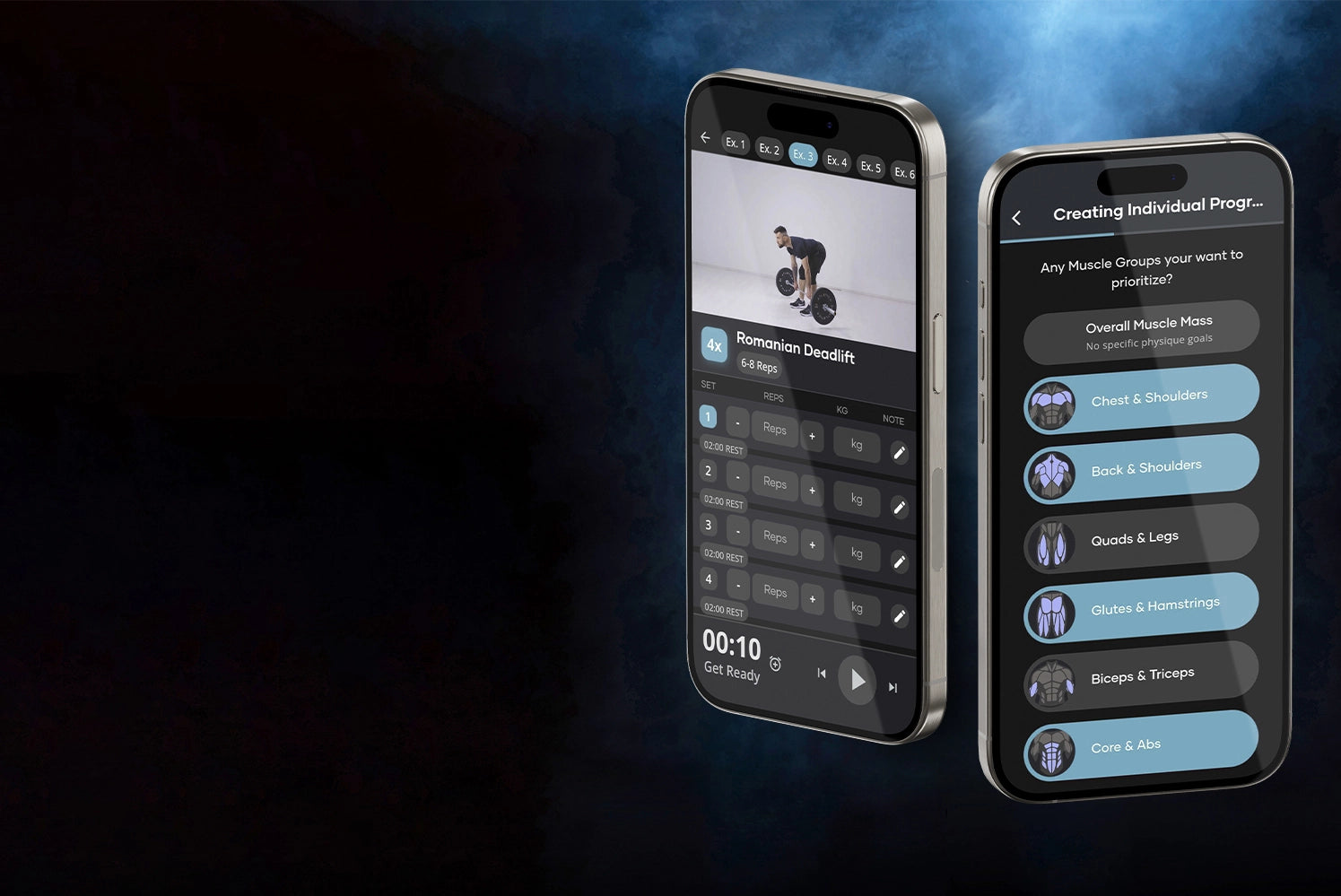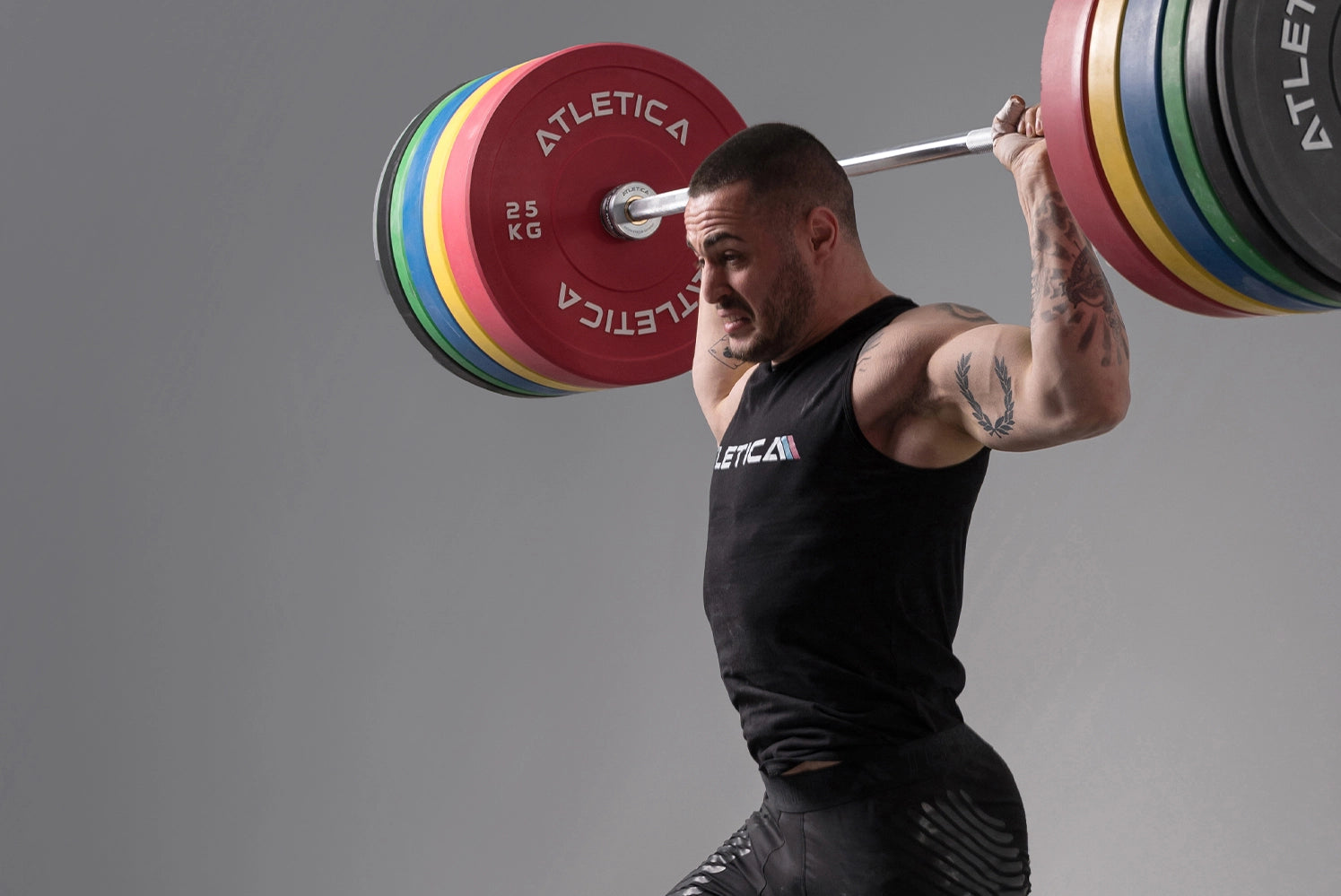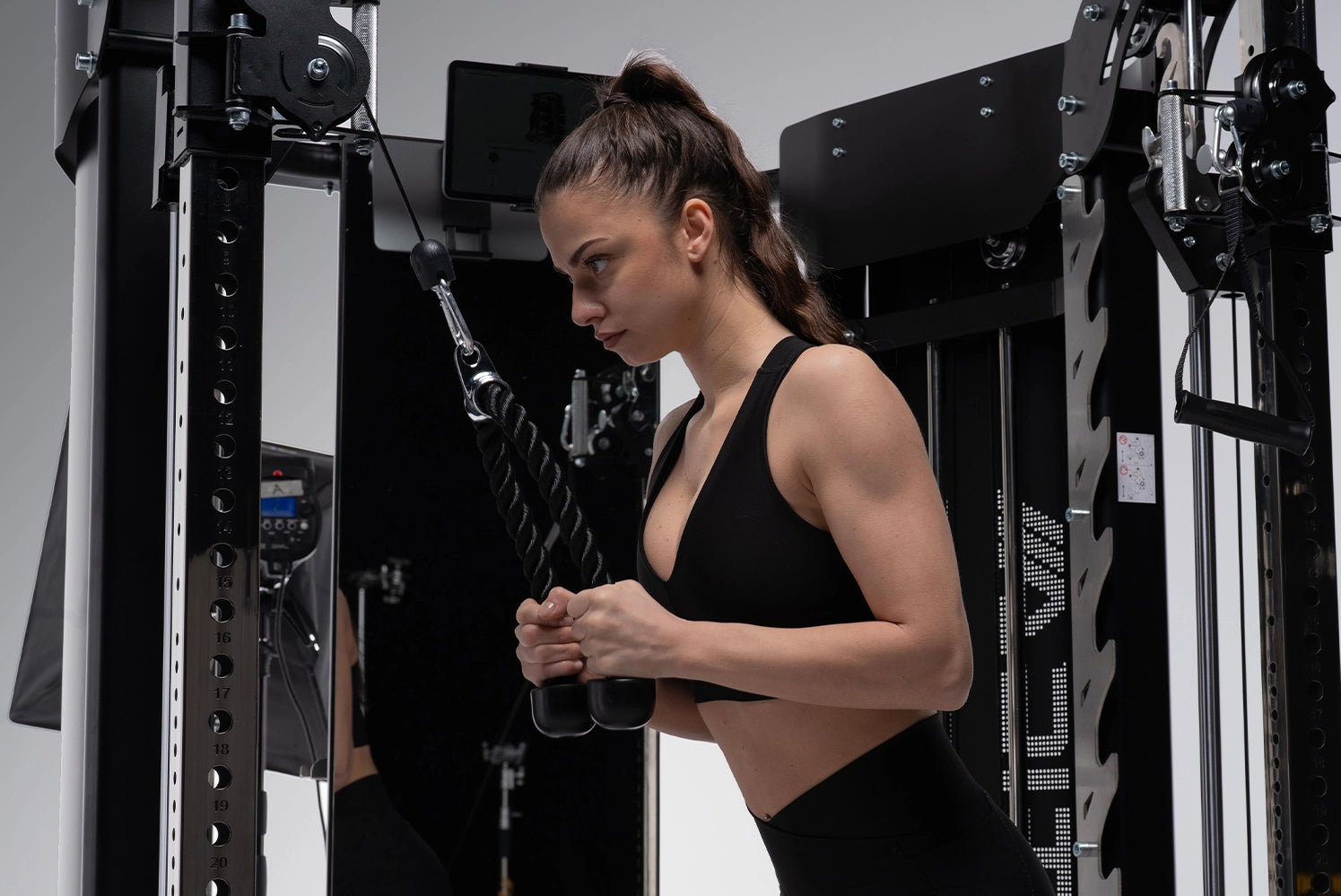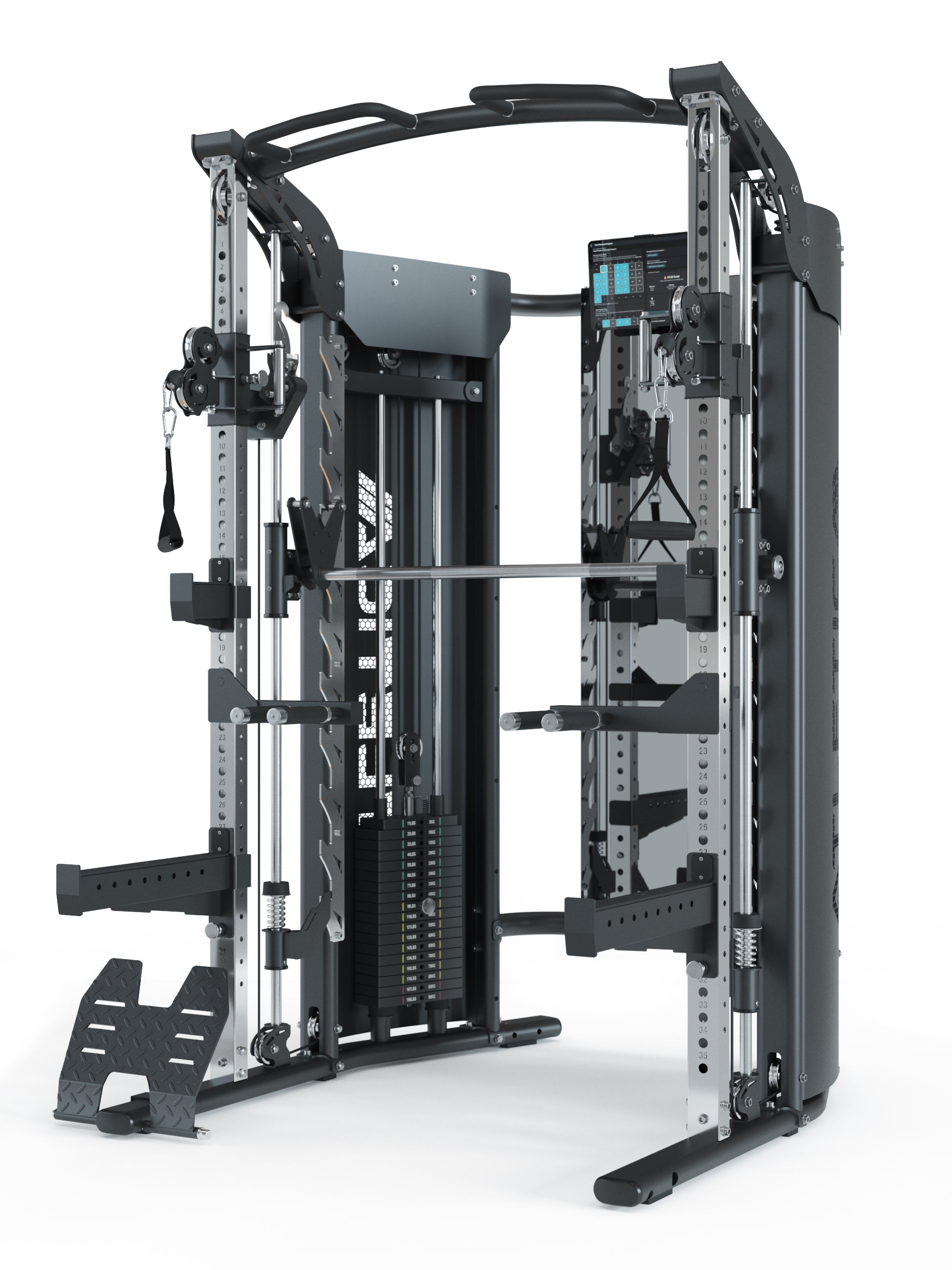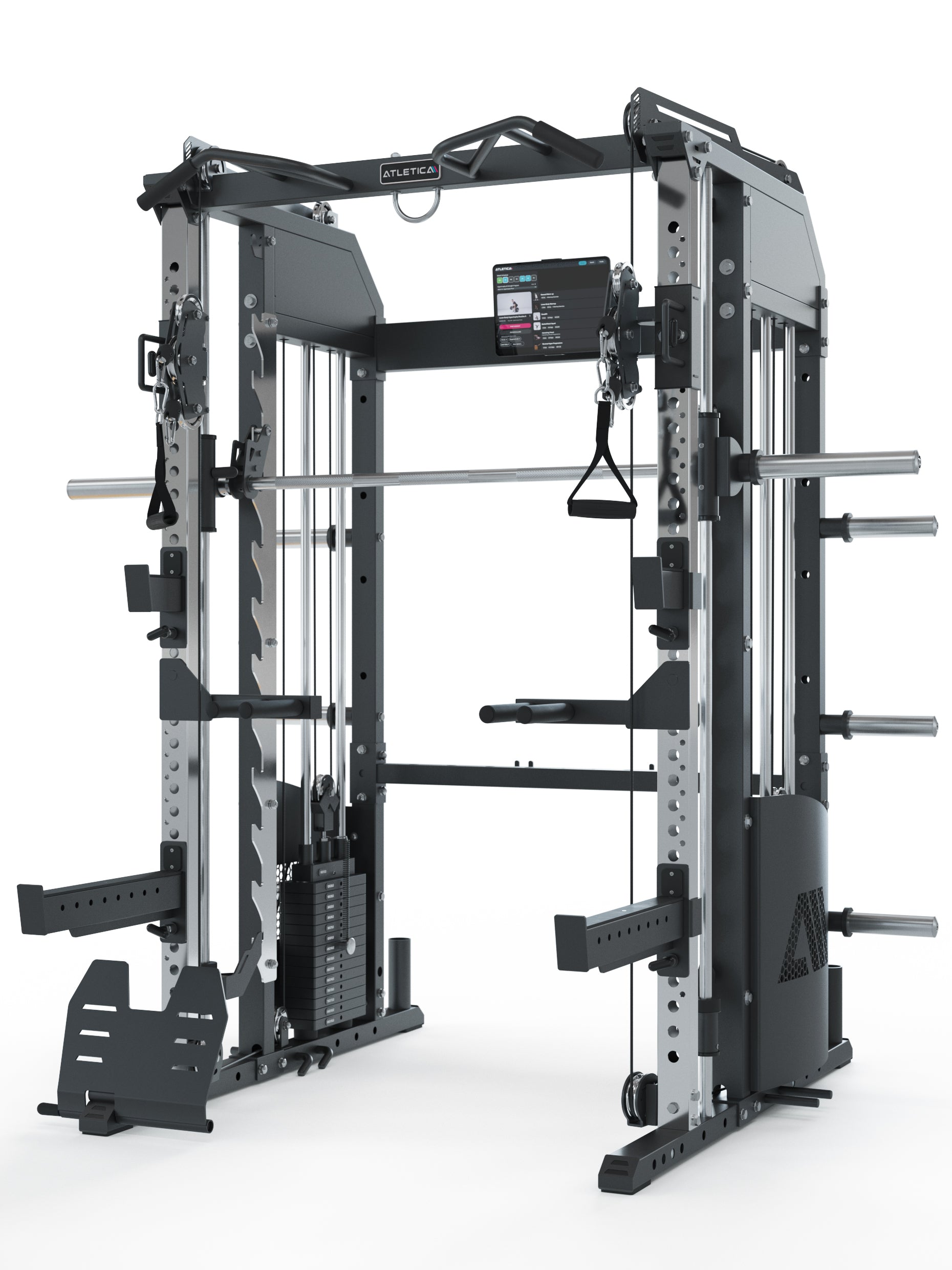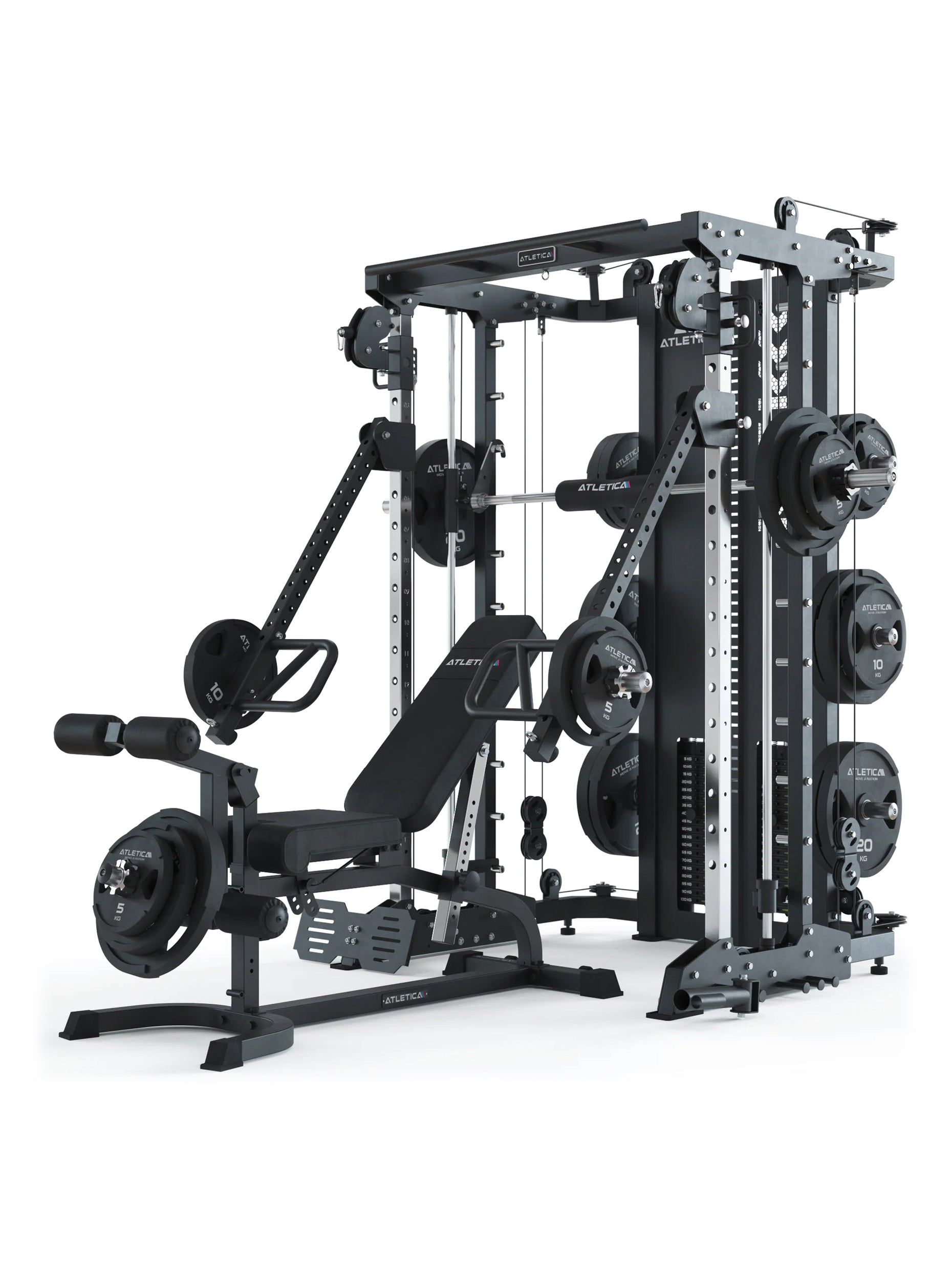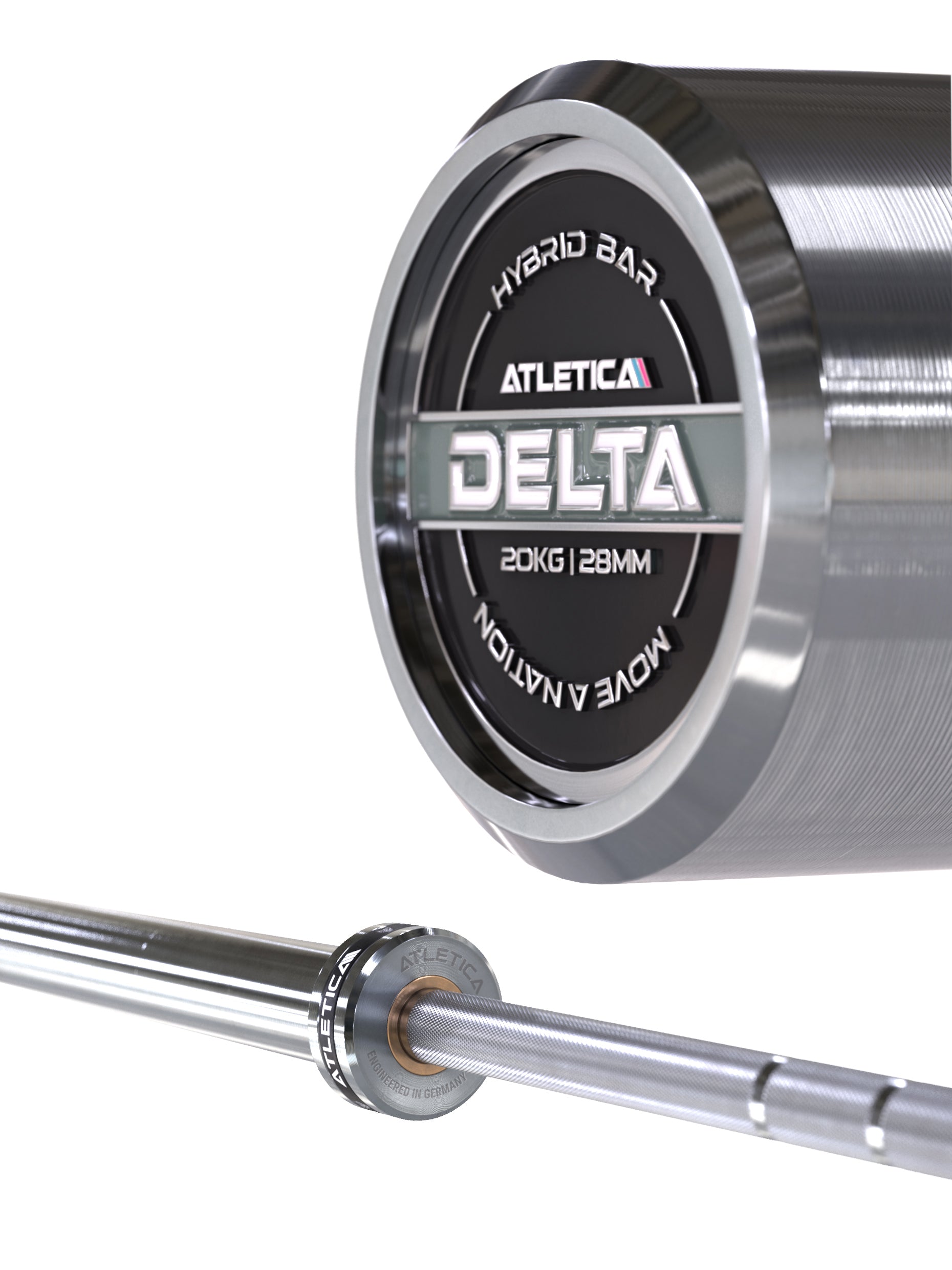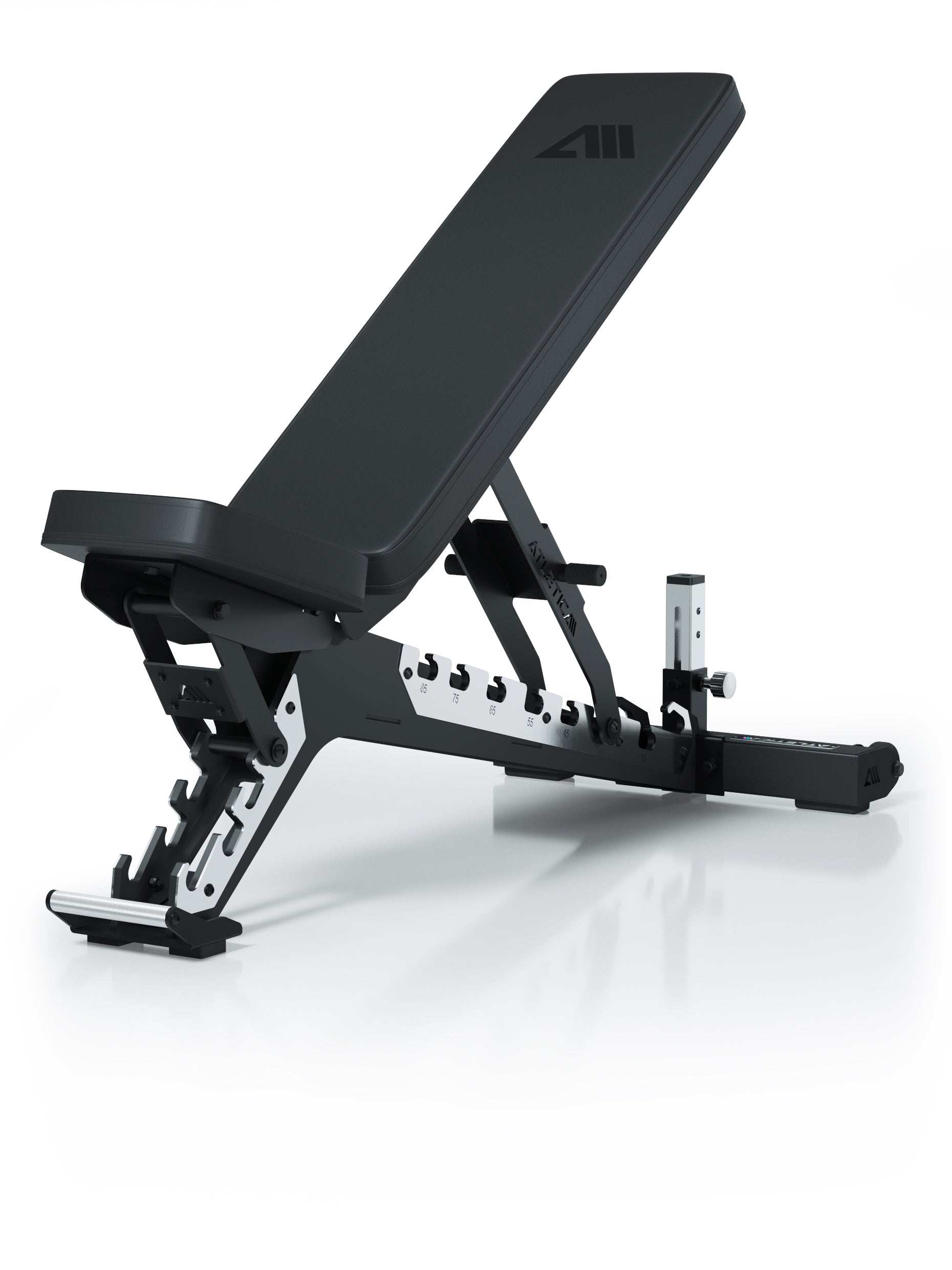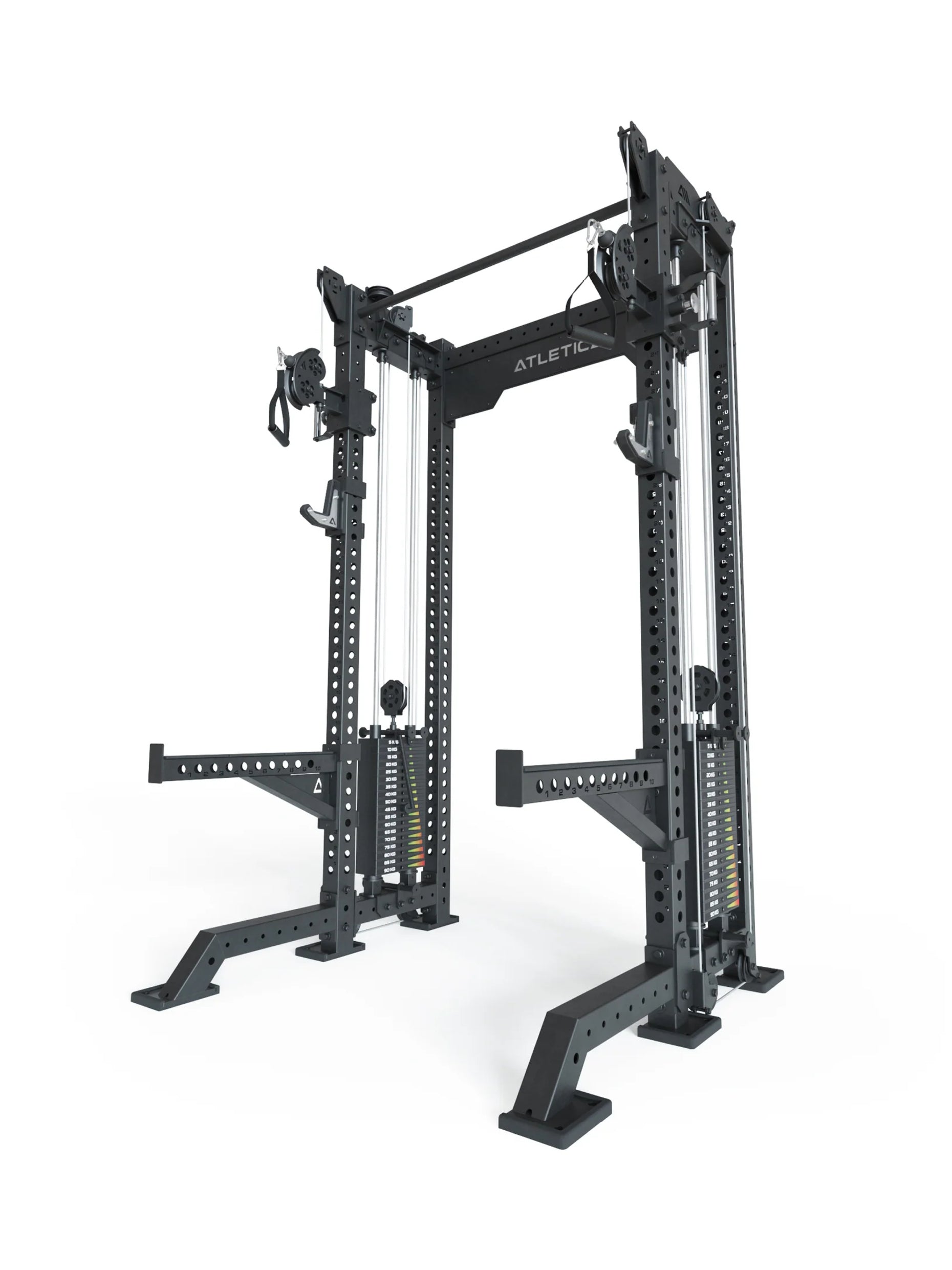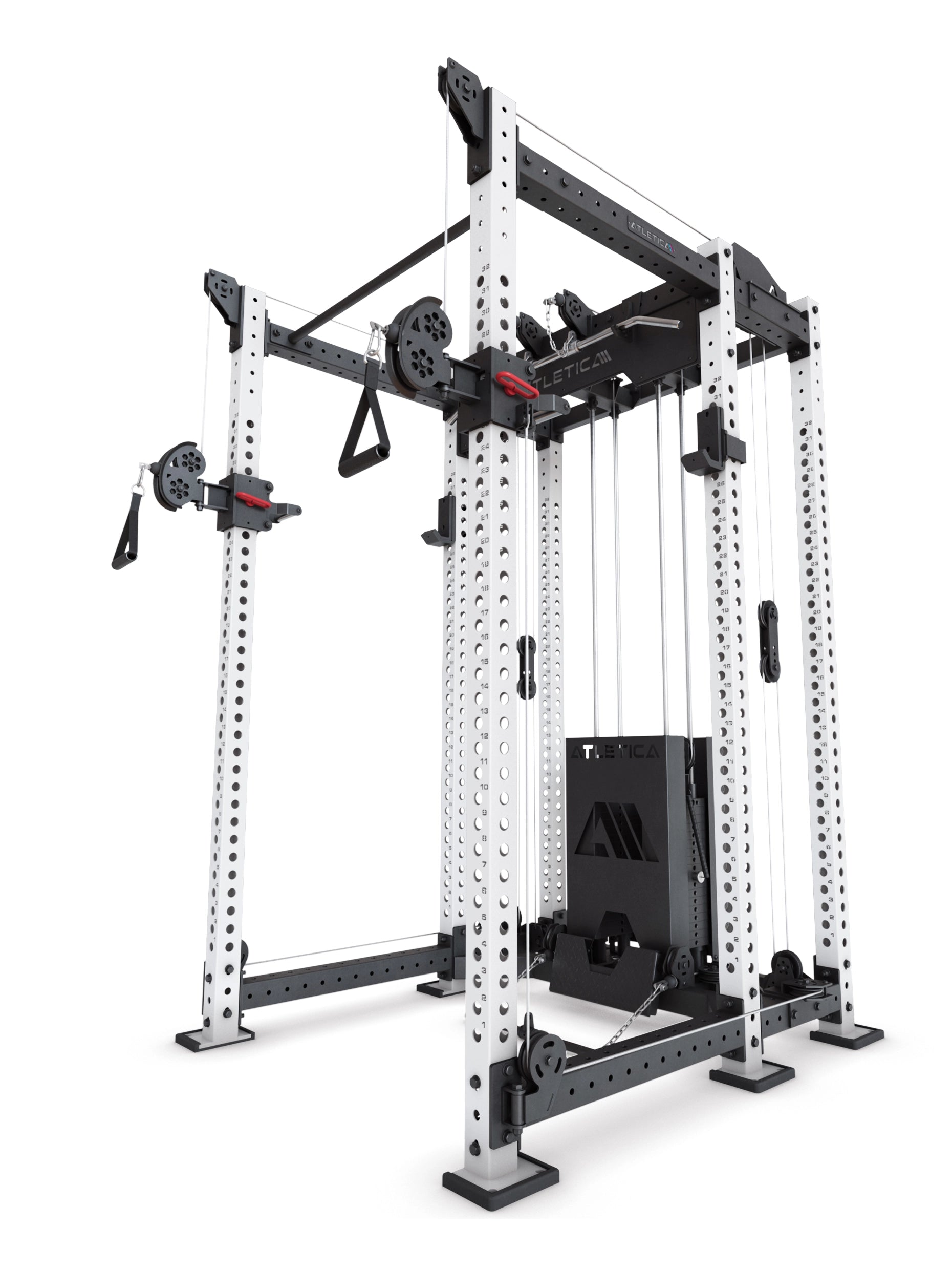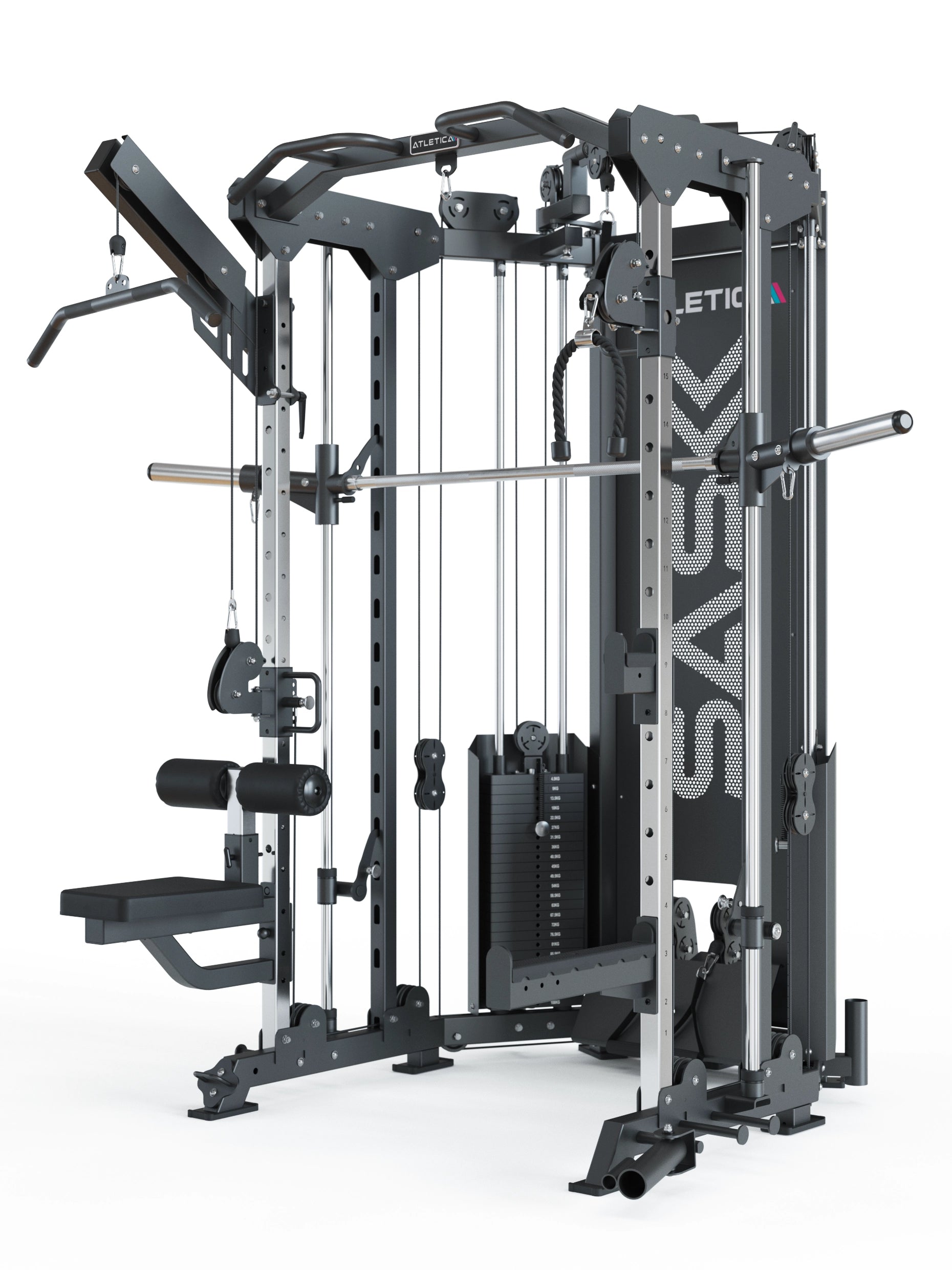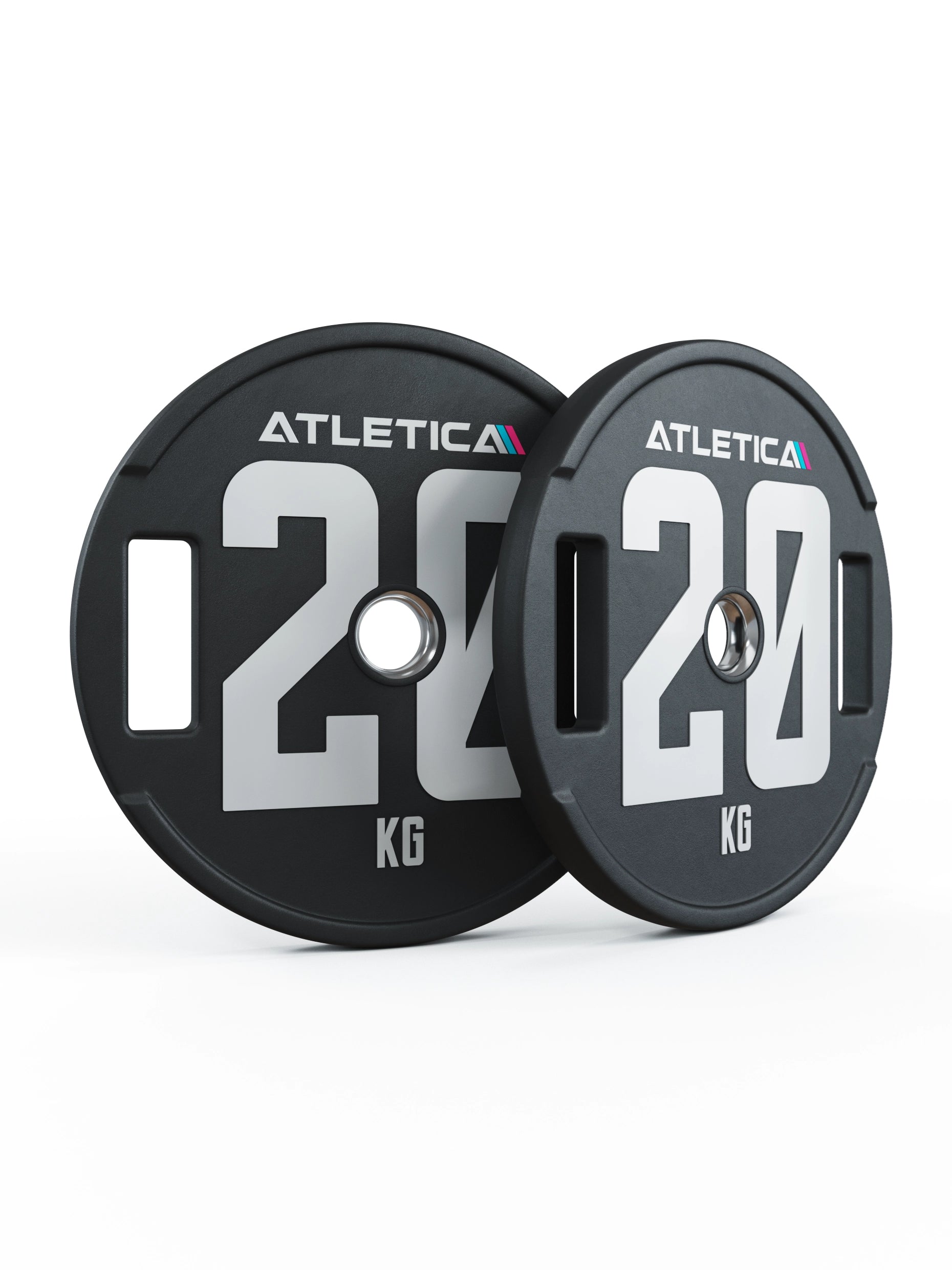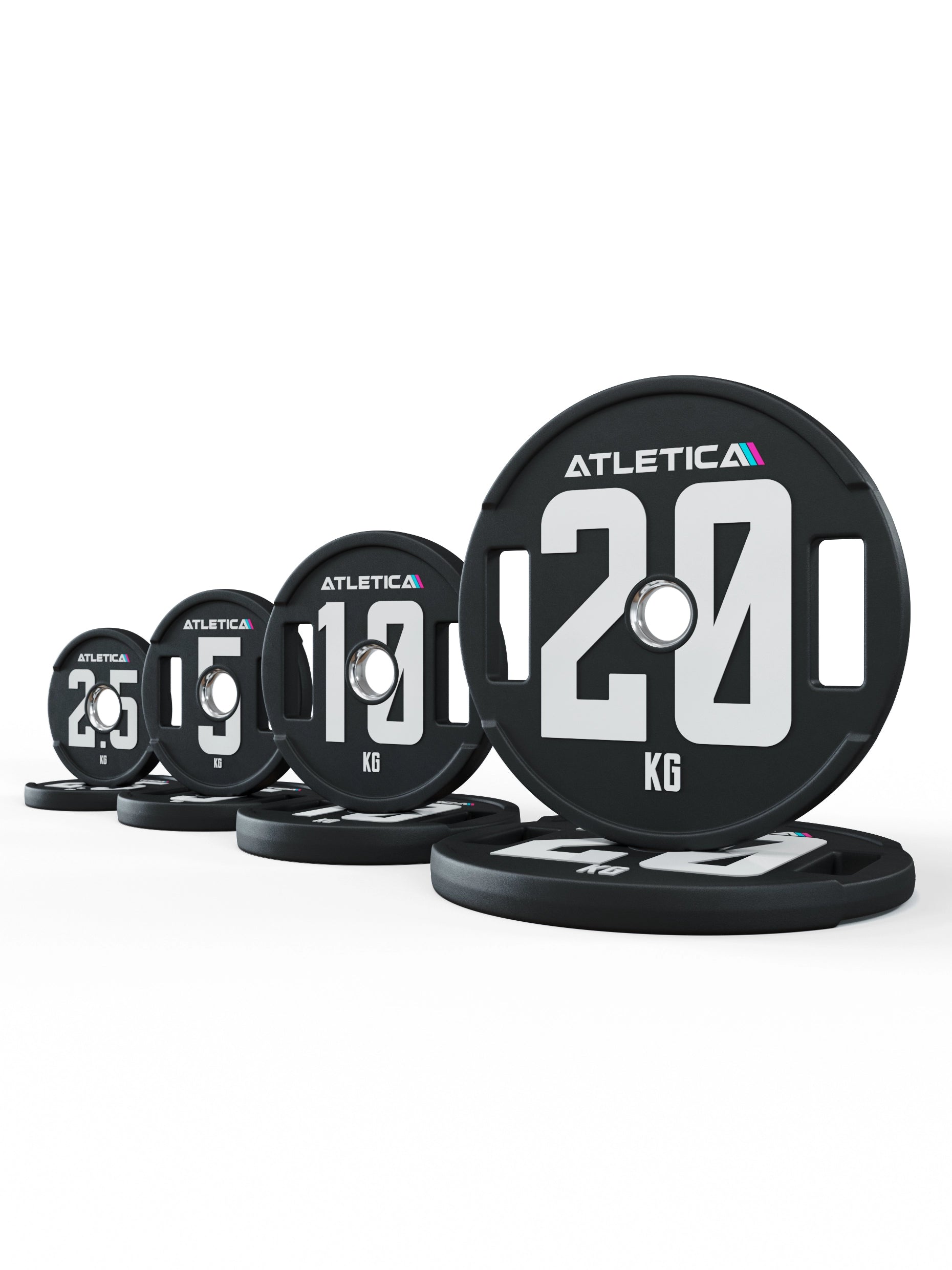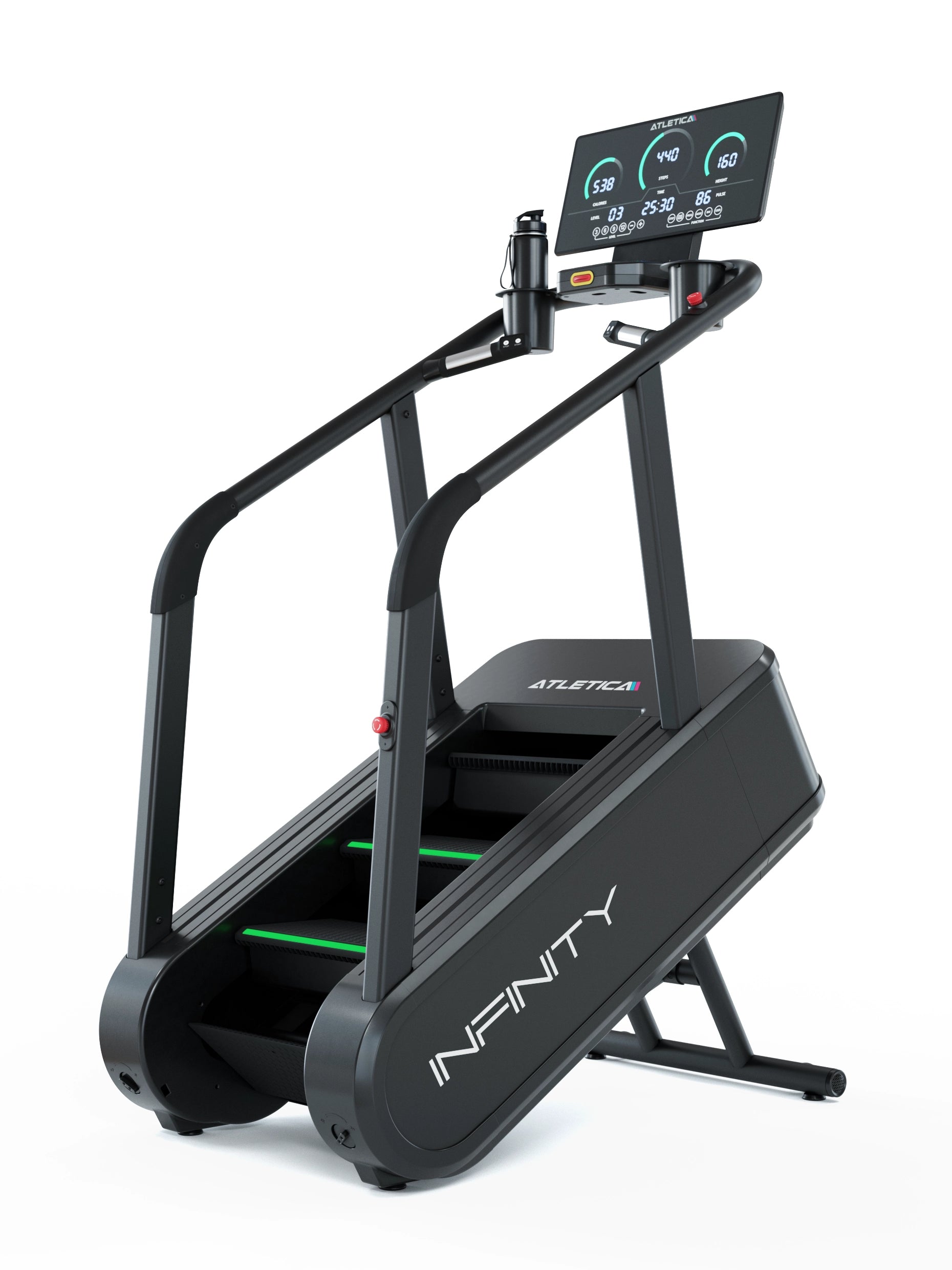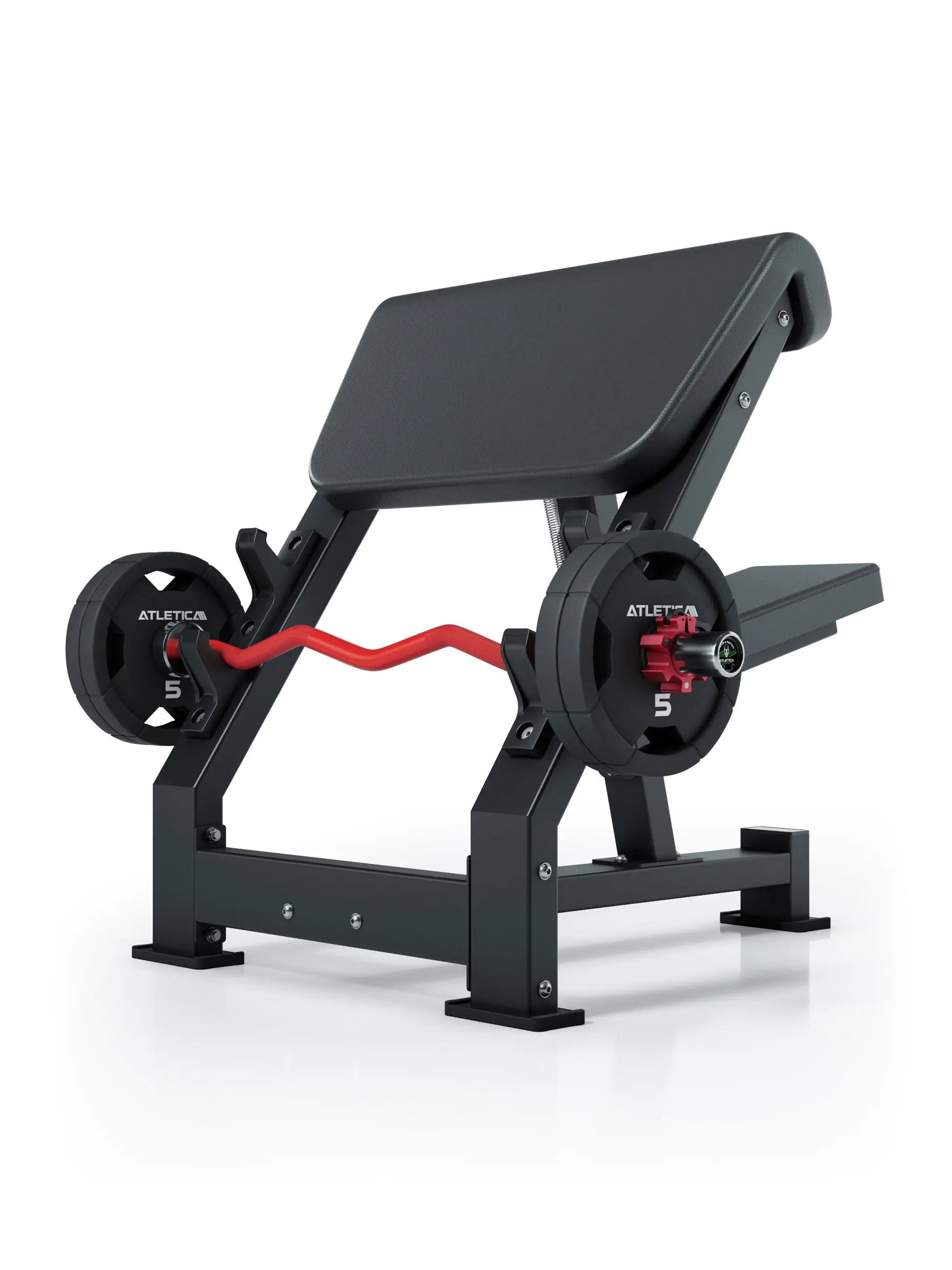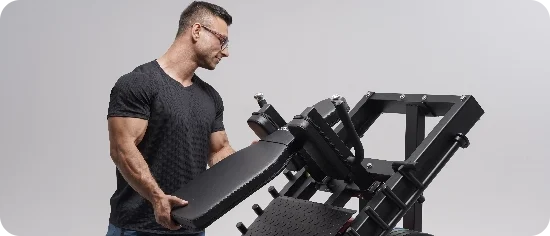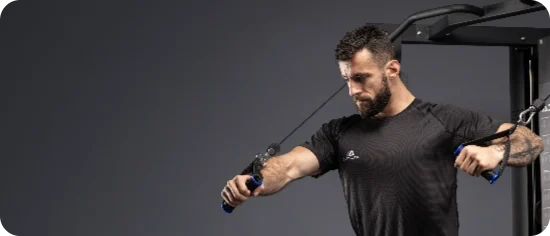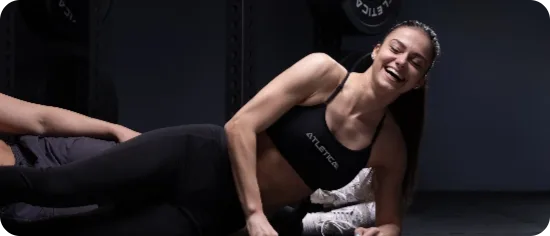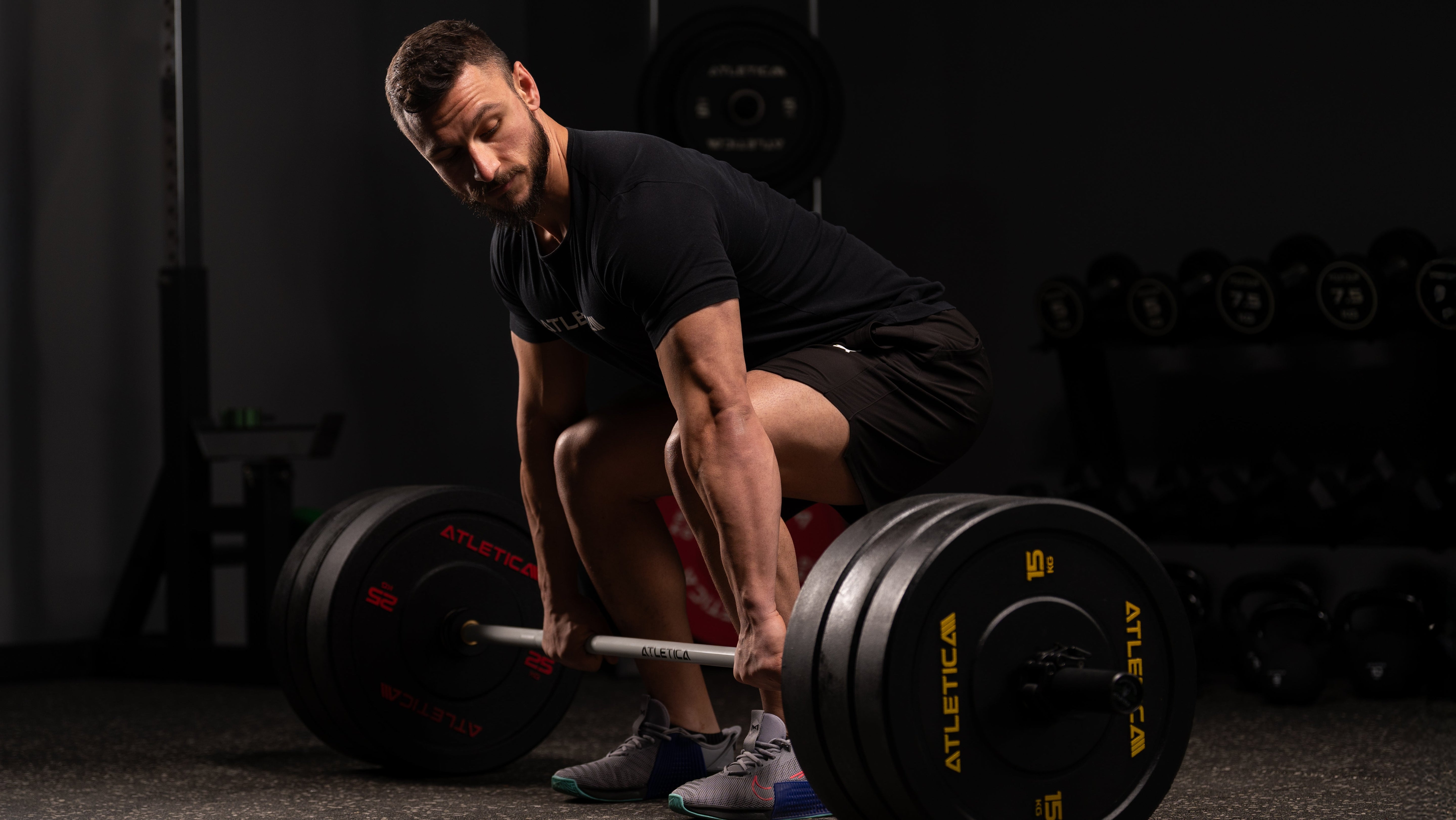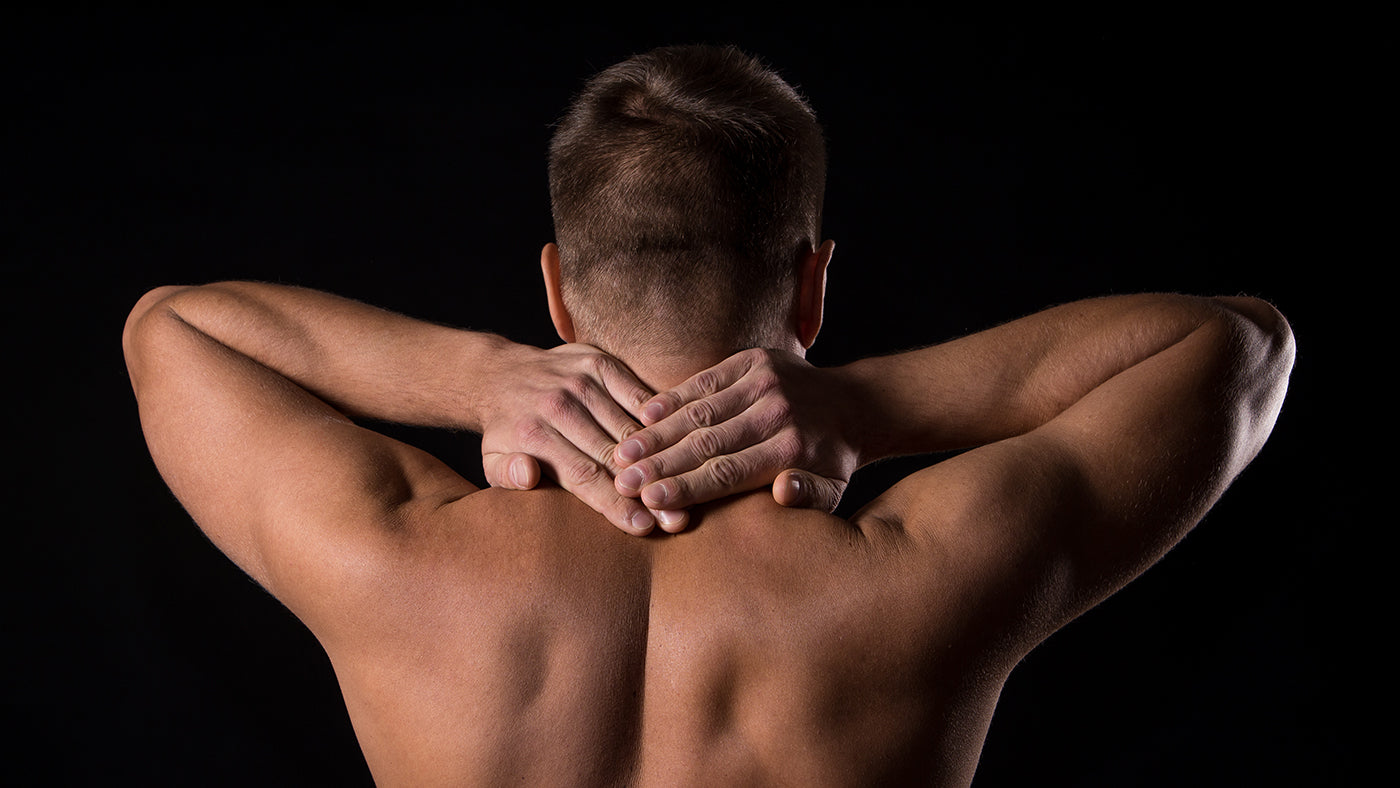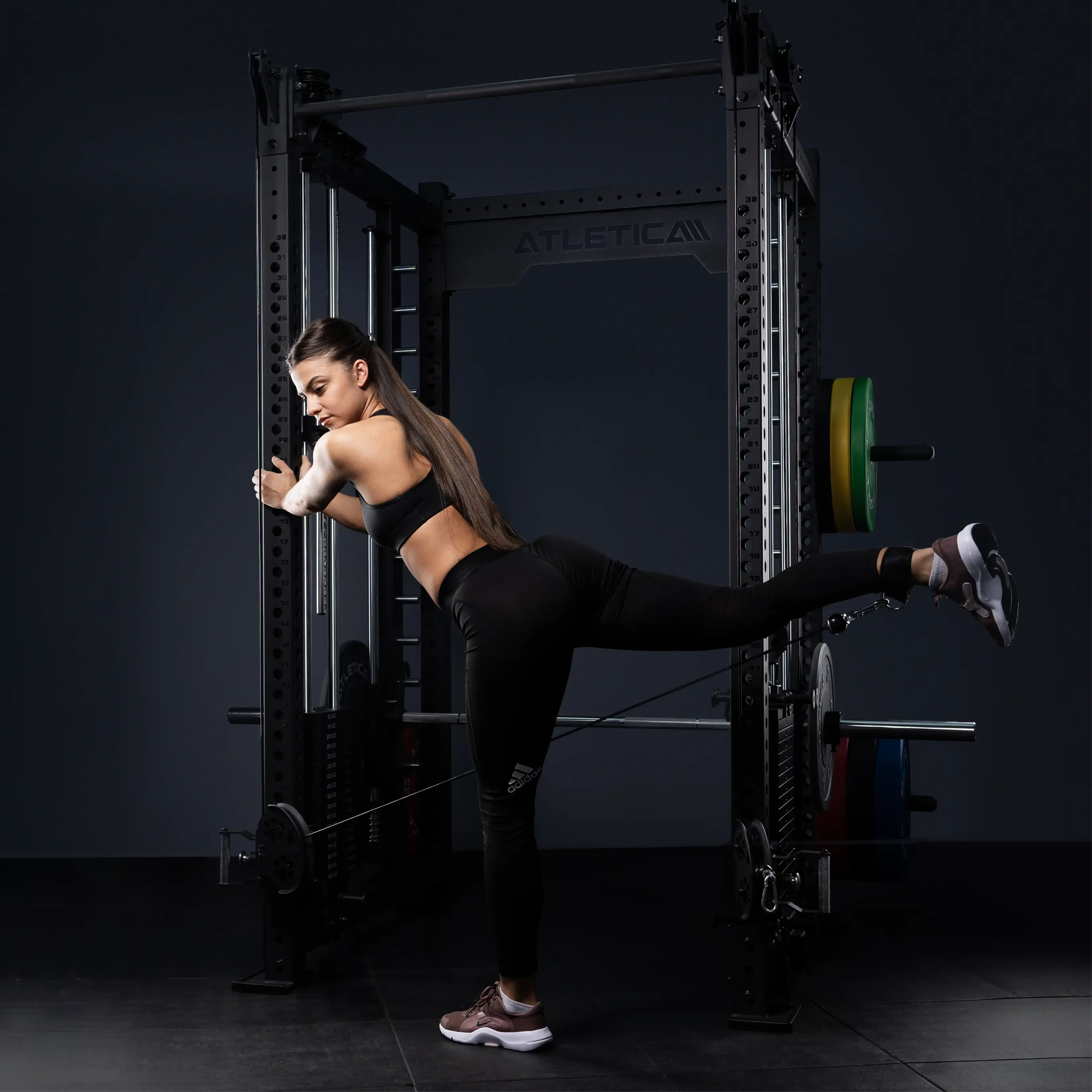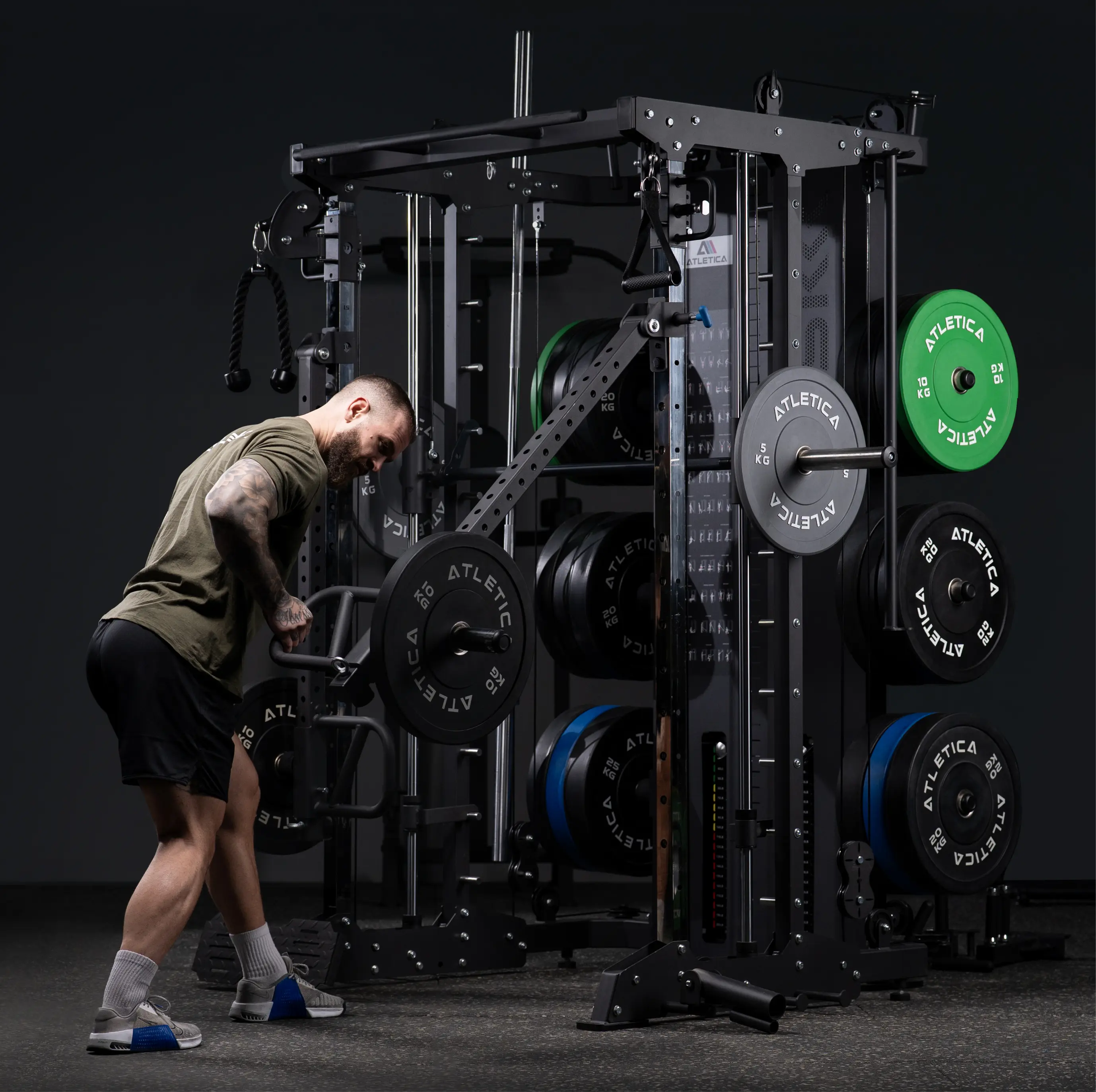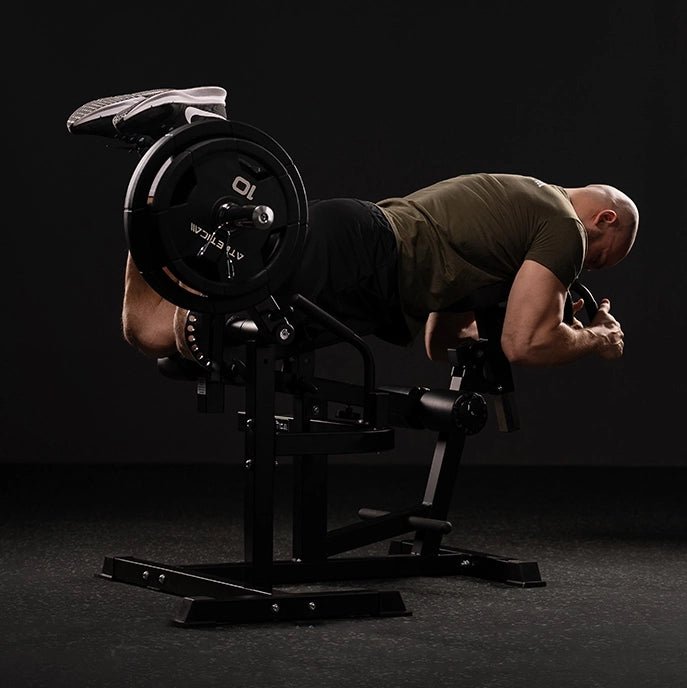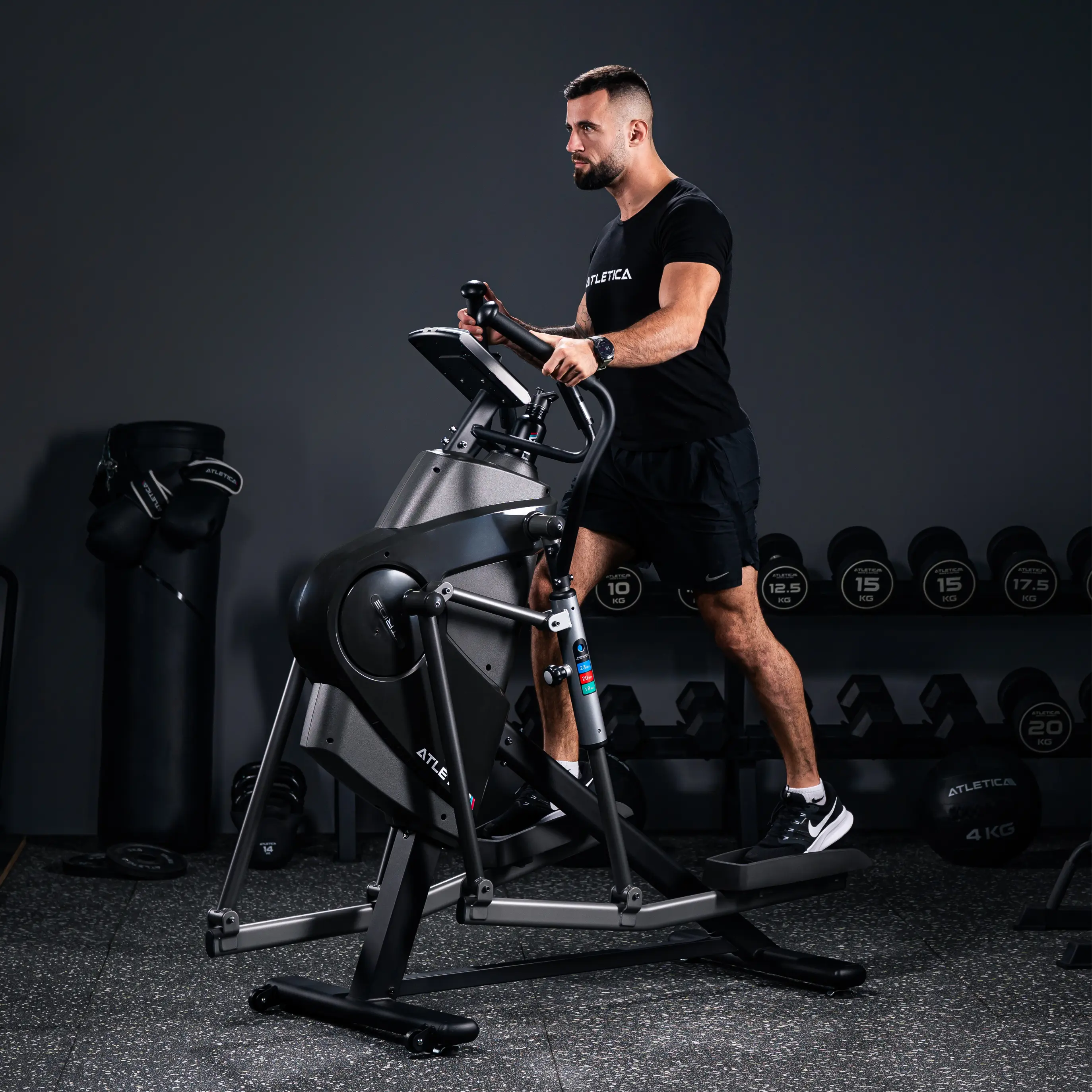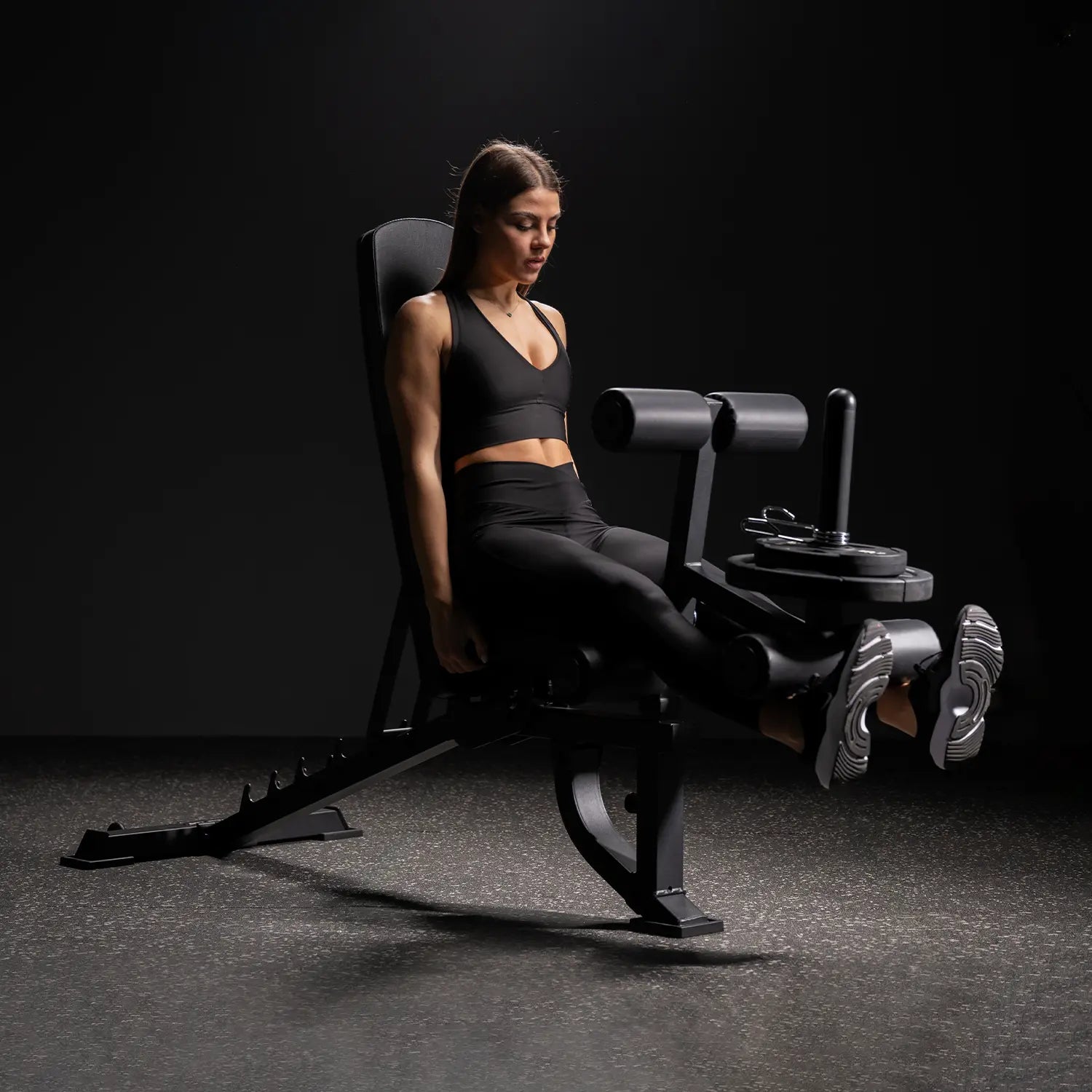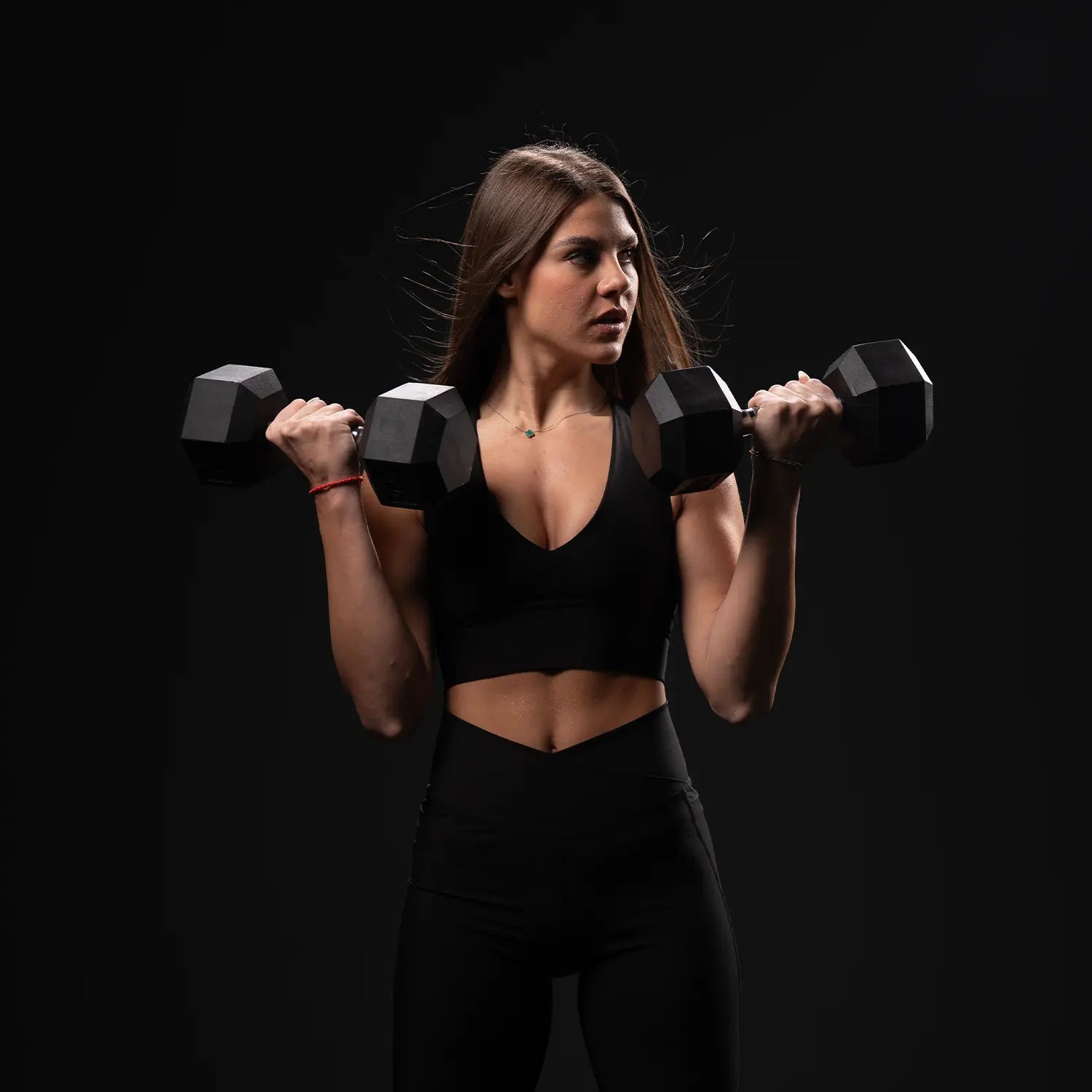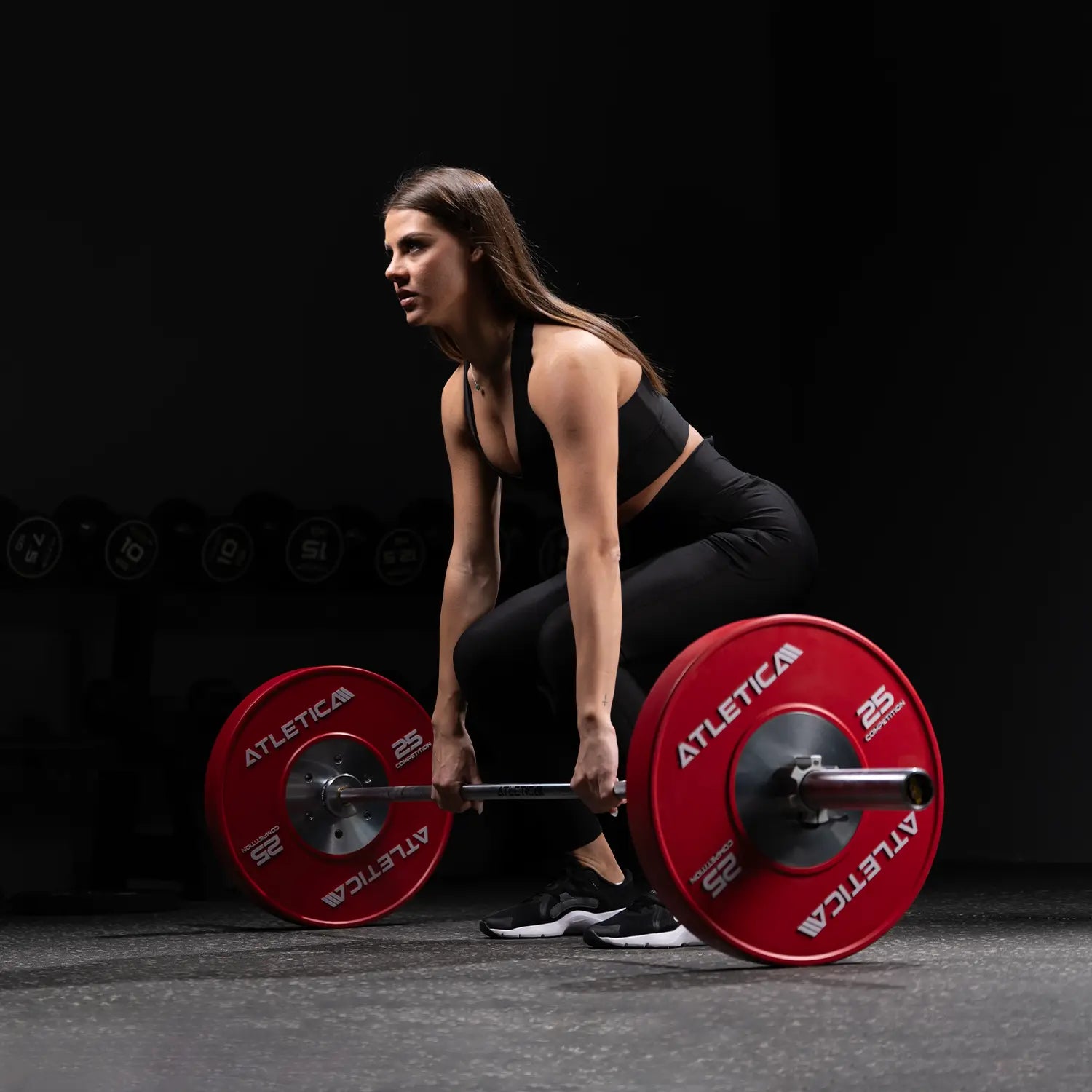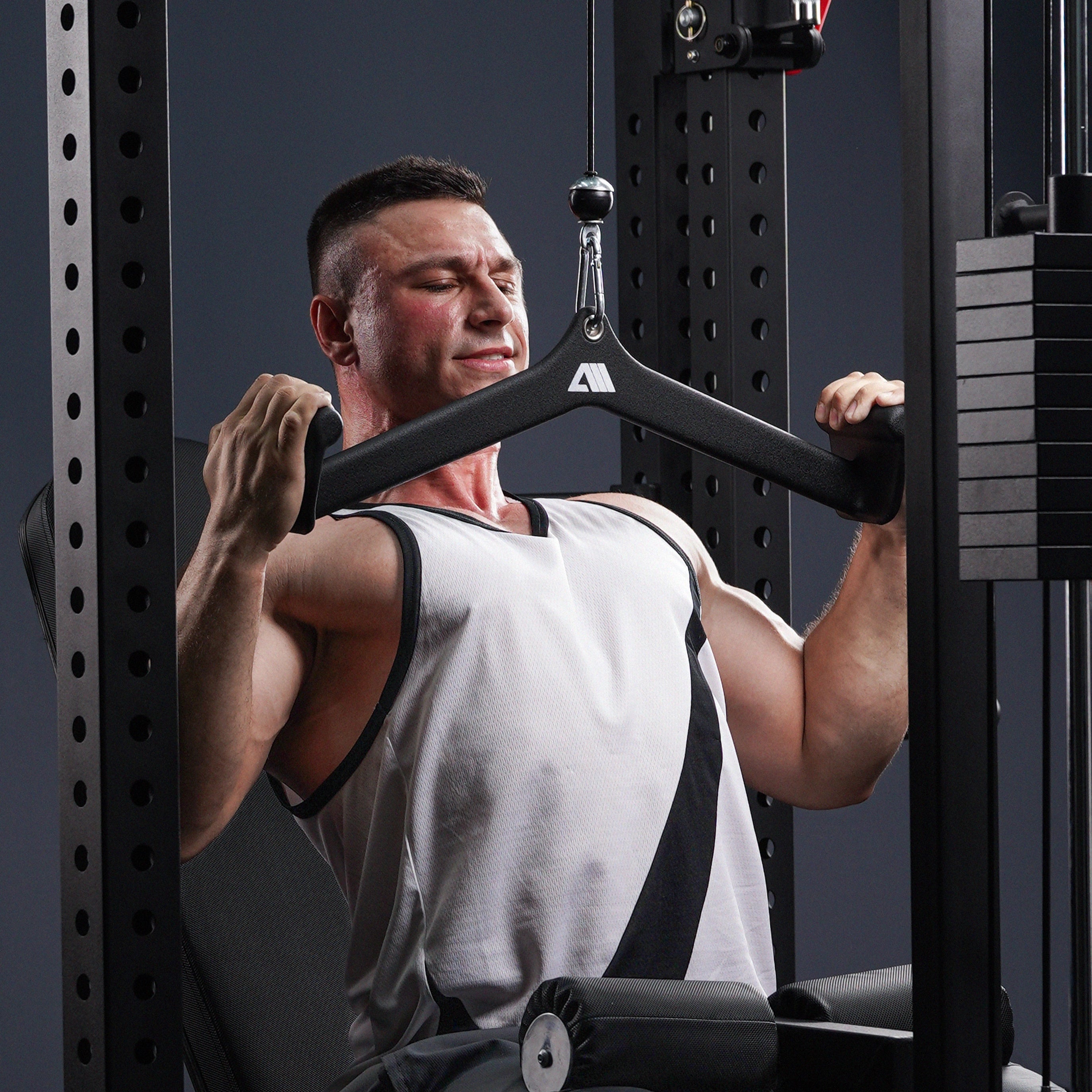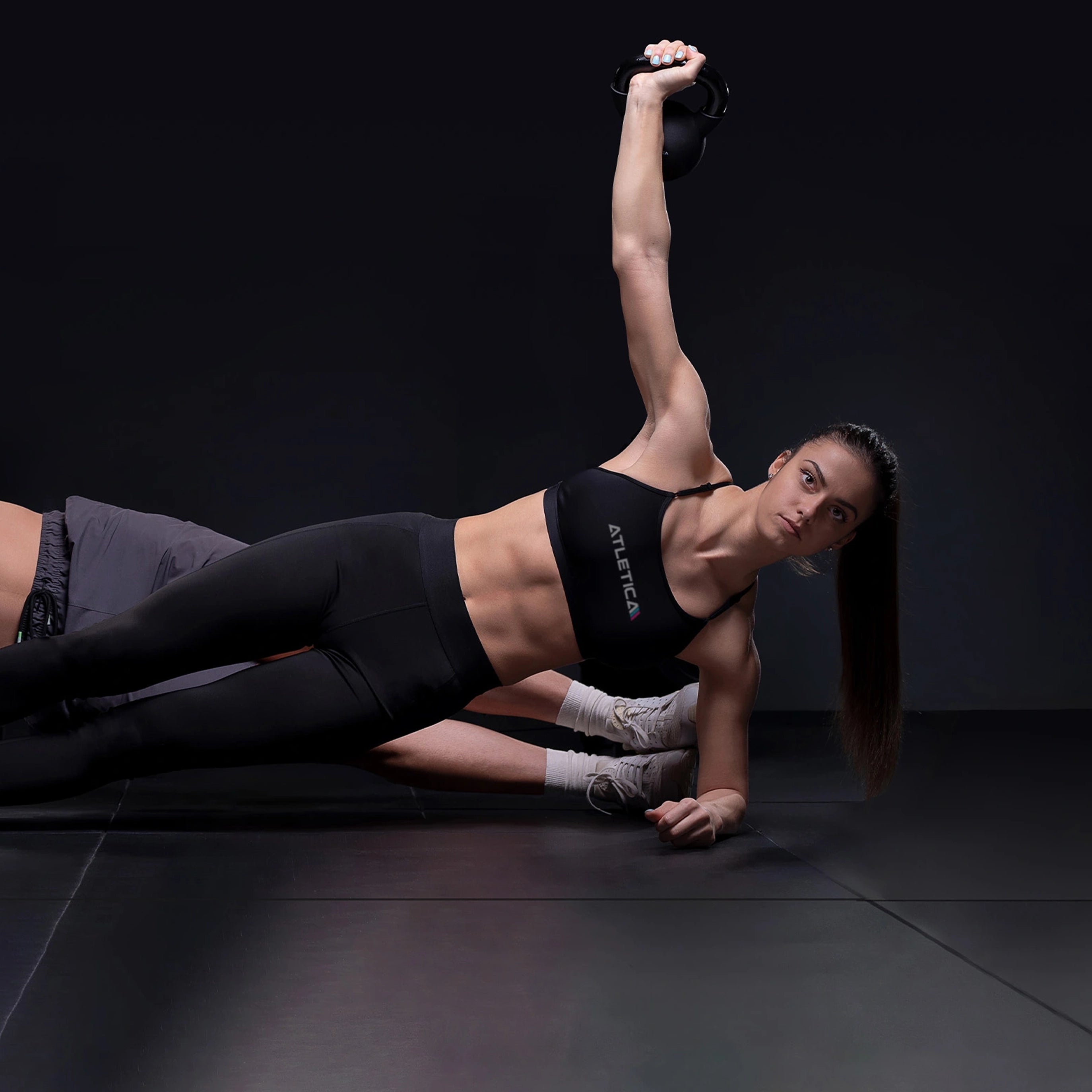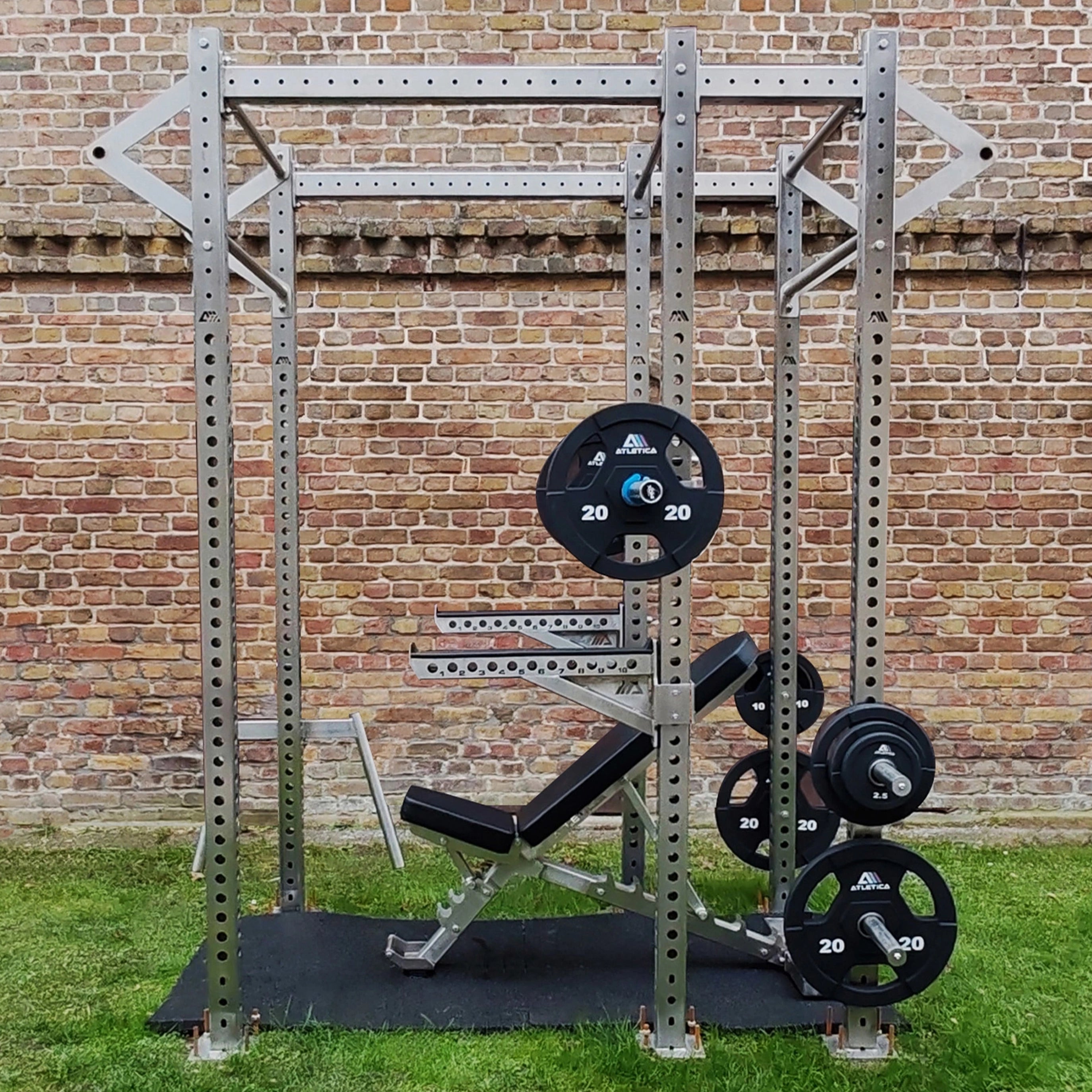Many strength athletes love upper- body training—but a quick look at their legs quickly reveals that their lower body is often neglected. Strong legs form the foundation for functional strength, athletic performance, and healthy posture .
A structured leg training plan not only increases muscle mass in the thighs, calves and buttocks, but also protects against injuries, stabilizes the knee joint and improves athletic performance in disciplines such as running, cycling or football.

Which muscles you should cover with your leg training
A good plan trains the entire leg muscles:
- Quadriceps (front thigh)
- Hamstrings (back of thigh)
- Gluteus Maximus (buttocks )
- Adductors and abductors (inner and outer thighs)
- Calf muscles (Gastrocnemius & Soleus)
In addition, there are stabilizing muscles in the hips and torso, which are particularly activated during free exercises such as squats, lunges or step-ups.
This is what an effective leg training plan looks like
A well-thought-out training plan includes:
1. Squat movement (e.g. B. Squats or leg press)
2. Hip dominant exercise (e.g. B. Hip Thrusts or Deadlifts)
3. Unilateral exercise (e.g. B. Bulgarian Split Squats)
4. Isolation exercise (e.g. B. Leg curl or calf training)
5. Core & mobility exercises to support

Depending on the goal (muscle building, strength, definition), the number of repetitions, breaks and intensity vary.
Example training plan for 2 units per week
Day 1: Focus Quadriceps & Glutes
• Squat with barbell: 4×8
• Bulgarian Split Squats: 3×10 each leg
• Hip Thrusts with weight bench: 4×12
• Standing calf raises: 3×15
• Cool-down + stretching with fascia roll
Day 2: Focus Hamstrings & Stability
• Deadlifts with dumbbells: 4×6
• Leg curls (alternatively: Nordic curls): 3 ×10
• Step-ups on weight bench with additional weight: 3×8 per side
• Seated calf raises: 3×20
• Core circuit with planks, leg raises, side plank
Tip: Ensure sufficient regeneration (at least 48 h break) and good technique – especially in complex movements.
The best equipment for your leg training – at home & in the gym
Atletica offers high-quality equipment that allows you to train your legs effectively and safely – whether in your home gym or studio.
• Power Rack R5 – perfect for squats, lunges and step-ups with barbell
• Adjustable weight bench B10 – as a platform for Bulgarian split squats and hip thrusts
• Dumbbells (Hex Dumbbells) – for versatile free exercises

• Resistance Bands – ideal for warming up, isolation exercises and abductors
• Fascia roll & massage ball – for regeneration and mobilization
Optional : Supplement your equipment with weight plates and a barbell – or use the R7 Power Rack for professional full -body strength training.
What you should pay attention to when training your legs
Technology before weight
Whether you're a beginner or advanced, poor form—especially with squats or deadlifts—can lead to injury. Use mirrors or videotape yourself to check your form.
Warm-up & activation
Before you lift heavy loads, you should prepare your muscles. For example, use B. a mini band to activate gluteus & abductors and do a light cardio warm-up (e.g. B. with the MagnaBike).
Pace & Suspense
Use a conscious pace – e.g. E.g., 2 seconds eccentric, 1 second rest, explosively high. Maintain core tension and control the movement.

How many repetitions are optimal?
Your goal determines the number of repetitions:
• Strength building: 3–6 reps with heavy load
• Hypertrophy (muscle building): 8–12 reps with moderate load
• Strength endurance & definition: 12–20 reps with lower weight
A mix of different repetition ranges over several weeks (“periodization “ ) leads to better progress in the long term.
Leg training for beginners – just get started
For beginners, bodyweight exercises and light additional loads are suitable, e.g. E.g. with mini bands:
• Air squats
• Lunges on the spot
• Hip bridge with mini band
• Step-ups with your own body weight
• Calf raises on the landing
Important : Learn the technique properly before increasing the weight. A mirror or a coach will help you get started.
How to recover optimally after a leg workout
After intensive leg training, regeneration is essential – especially when muscles are sore or after heavy exertion:
• Easy cycling with the AirBike or walking
• Stretching and mobilizing the leg muscles
• Fascia massage for thighs, glutes and calves
• Protein-rich diet and sufficient fluids
• At least 7 hours of sleep for cell repair

Also include active recovery days with light stretching, yoga, or mobility training.
Conclusion: Achieve success with a leg training plan
Anyone who trains seriously can't avoid a structured leg training plan. Strong legs aren't just important for looks—they're the foundation for functional strength, stability, and health.
Whether you train at home with dumbbells and mini bands or work on equipment in the gym – with the right plan, clean technique and sufficient recovery, you can achieve noticeable results.
You can find the best tools for this in the Atletica online shop – or get even more inspiration in our knowledge blog . Your leg training begins now – efficient, safe, and motivating.


